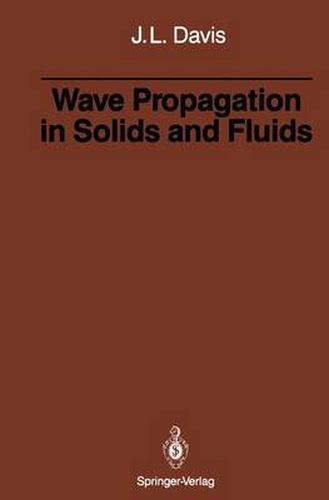Readings Newsletter
Become a Readings Member to make your shopping experience even easier.
Sign in or sign up for free!
You’re not far away from qualifying for FREE standard shipping within Australia
You’ve qualified for FREE standard shipping within Australia
The cart is loading…






This title is printed to order. This book may have been self-published. If so, we cannot guarantee the quality of the content. In the main most books will have gone through the editing process however some may not. We therefore suggest that you be aware of this before ordering this book. If in doubt check either the author or publisher’s details as we are unable to accept any returns unless they are faulty. Please contact us if you have any questions.
The purpose of this volume is to present a clear and systematic account of the mathematical methods of wave phenomena in solids, gases, and water that will be readily accessible to physicists and engineers. The emphasis is on developing the necessary mathematical techniques, and on showing how these mathematical concepts can be effective in unifying the physics of wave propagation in a variety of physical settings: sound and shock waves in gases, water waves, and stress waves in solids. Nonlinear effects and asymptotic phenomena will be discussed. Wave propagation in continuous media (solid, liquid, or gas) has as its foundation the three basic conservation laws of physics: conservation of mass, momentum, and energy, which will be described in various sections of the book in their proper physical setting. These conservation laws are expressed either in the Lagrangian or the Eulerian representation depending on whether the boundaries are relatively fixed or moving. In any case, these laws of physics allow us to derive the field equations which are expressed as systems of partial differential equations. For wave propagation phenomena these equations are said to be hyperbolic and, in general, nonlinear in the sense of being quasi linear . We therefore attempt to determine the properties of a system of quasi linear hyperbolic partial differential equations which will allow us to calculate the displacement, velocity fields, etc.
$9.00 standard shipping within Australia
FREE standard shipping within Australia for orders over $100.00
Express & International shipping calculated at checkout
This title is printed to order. This book may have been self-published. If so, we cannot guarantee the quality of the content. In the main most books will have gone through the editing process however some may not. We therefore suggest that you be aware of this before ordering this book. If in doubt check either the author or publisher’s details as we are unable to accept any returns unless they are faulty. Please contact us if you have any questions.
The purpose of this volume is to present a clear and systematic account of the mathematical methods of wave phenomena in solids, gases, and water that will be readily accessible to physicists and engineers. The emphasis is on developing the necessary mathematical techniques, and on showing how these mathematical concepts can be effective in unifying the physics of wave propagation in a variety of physical settings: sound and shock waves in gases, water waves, and stress waves in solids. Nonlinear effects and asymptotic phenomena will be discussed. Wave propagation in continuous media (solid, liquid, or gas) has as its foundation the three basic conservation laws of physics: conservation of mass, momentum, and energy, which will be described in various sections of the book in their proper physical setting. These conservation laws are expressed either in the Lagrangian or the Eulerian representation depending on whether the boundaries are relatively fixed or moving. In any case, these laws of physics allow us to derive the field equations which are expressed as systems of partial differential equations. For wave propagation phenomena these equations are said to be hyperbolic and, in general, nonlinear in the sense of being quasi linear . We therefore attempt to determine the properties of a system of quasi linear hyperbolic partial differential equations which will allow us to calculate the displacement, velocity fields, etc.